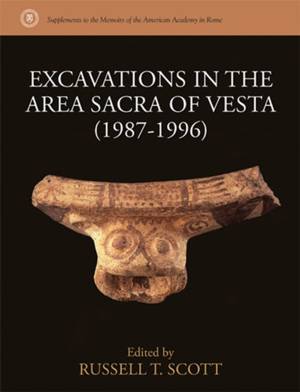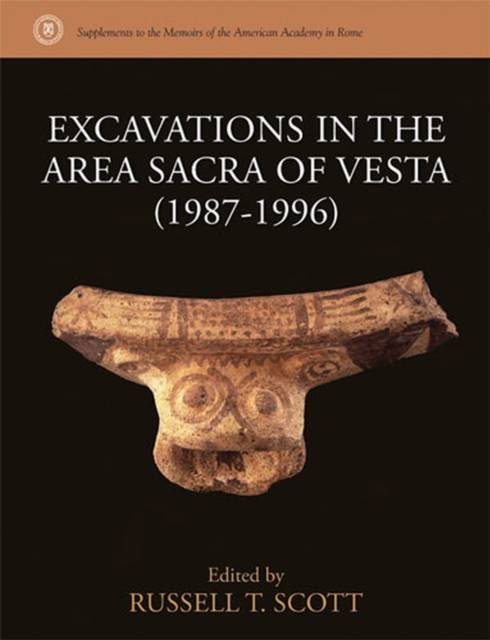
- Afhalen na 1 uur in een winkel met voorraad
- Gratis thuislevering in België vanaf € 30
- Ruim aanbod met 7 miljoen producten
- Afhalen na 1 uur in een winkel met voorraad
- Gratis thuislevering in België vanaf € 30
- Ruim aanbod met 7 miljoen producten
Zoeken
Excavations in the Area Sacra of Vesta (1987-1996)
€ 122,45
+ 244 punten
Omschrijving
Dedicated to Vesta, the goddess of the hearth, the temple of Vesta was one of the most ancient sanctuaries in the Roman Forum. The priestesses of Vesta, known as the Vestal Virgins---Rome's only female priests---were in charge of keeping the sacred fire housed in the temple, while they themselves lived in the Atrium Vestae at the eastern edge of the Roman Forum, between the Regia (originally the residence of the kings of Rome) and the Palatine Hill. Together, the Atrium Vestae, the temple of Vesta, and the Regia formed the religious center of the Roman state until a fire destroyed much of Rome and largely burned all three buildings to the ground in 64 CE. Over the years, numerous excavations have taken place in the area and have often produced unreliable results. In Excavations in the Area Sacra of Vesta (1987-1996), Russell T. Scott compiles a definitive chronology of the history of the Atrium Vestae, clarifying much of the earlier research.Russell T. Scott has taught at Bryn Mawr College since 1966 and served as Andrew W. Mellon Professor of Classical Studies at the American Academy in Rome from 1984 to 1988. He has written widely on Roman history and historiography and the archaeology of Roman Italy, particularly the excavations at Cosa and in the Roman Forum carried out by the Academy under his direction.Jacket illustration: Italo-geometric basin. Photo by Russell T. Scott.
Specificaties
Betrokkenen
- Uitgeverij:
Inhoud
- Aantal bladzijden:
- 256
- Taal:
- Engels
- Reeks:
Eigenschappen
- Productcode (EAN):
- 9780472116911
- Verschijningsdatum:
- 1/07/2009
- Uitvoering:
- Hardcover
- Formaat:
- Genaaid
- Afmetingen:
- 216 mm x 279 mm
- Gewicht:
- 1088 g

Alleen bij Standaard Boekhandel
+ 244 punten op je klantenkaart van Standaard Boekhandel
Beoordelingen
We publiceren alleen reviews die voldoen aan de voorwaarden voor reviews. Bekijk onze voorwaarden voor reviews.







